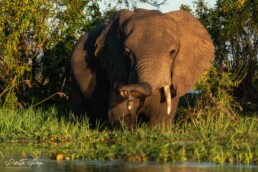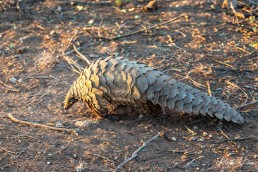Controlling Poaching During Pandemic: Interview with Conservation Lower Zambezi, Zambia
Conservation Lower Zambezi (CLZ) is a Zambian non-profit that focuses on wildlife protection, community support, and environmental education in Lower Zambezi National Park. We visited CLZ’s basecamp and chatted with their Finance and Projects Manager Hanneke Hogerheijde about poaching and wildlife conservation during a global pandemic.
Could you tell us about the poaching situation here in Lower Zambezi before CLZ was founded in 1994 and how it compares to this day?
–CLZ started with the lodge owners who came together to save wildlife tourism in the area over 25 years ago. Black rhinos were all poached out already in the late 1980s and by the mid-1990s also the elephant numbers had reduced enormously.
–In 2016 we had the highest ivory poaching rate ever, but last year we had only one elephant poached in the park. So, we’ve almost reduced poaching to zero, but it’s, of course, an ongoing process.
We’ve heard that you have plans to re-introduce black rhinos in Lower Zambezi – that’s exciting for sure!
–Yes, that’s why we’re investing so hard in the protection, intelligence, training, and special units.
How has your antipoaching work developed through the decades?
–It was hard in the beginning: we had just one Land Rover and a simple basecamp to support the Department of National Parks and Wildlife (DPNW), which lacked funds and resources to protect the wildlife.
–With law enforcement, we started with foot patrols and scouts, who go in the park looking for illegal activities. Then we built specialized units, which are working on intelligence and interrupt poaching. Nowadays we have a K9, rapid response unit, and intelligence unit.
–We have 24/7 communication in our new operations building with high-end information systems. The scouts are patrolling with GPS and smart devices so that we can track everything in real-time.
“We’ve almost reduced elephant poaching to zero.”
Hanneke Hogerheijde, Conservation Lower Zambezi
The buffer zone surrounding the Lower Zambezi National Park is called Game Management Area (GMA) and people live there in coexistence with the wildlife. The area under your mandate is huge, almost 20 000 km2 in total with the GMA. Distances are long and roads either bad or almost non-existent, as we saw driving in. How do you manage this enormous area?
–Aerial and river patrols are in a key role in spotting illegal activities: our Cessna finds almost 80 % of what we find. We’ve also launched helicopter operations in co-operation with South and North Luangwa National Parks.
–The future is the children. We work with 65 schools with our education center, where the kids can spend a few days learning more about the importance of wildlife and how wildlife conservation can benefit their lives.
–We also do outreach campaigns, where our education manager targets the teachers all-round GMA. Thus, we don’t have to drive all kids into our education center: the return trip can be 500 km’s on those bad roads, so all costs add up.
You’ve said that community work is vital to your success. How do you support the communities on top of education?
–We help them with human-wildlife conflict offering extra projects to generate money, building fences, wells, water pumps, and all kinds of other things.
–We’ve also collared elephants to monitor seasonal elephant movements and improve strategies for human-wildlife conflict. When the elephants come into the crops, our scouts will assist the farmers.
How has covid affected poaching in the Lower Zambezi area?
–The snaring has gone up, but it was to be expected, especially in the areas where people live. Most have lost jobs due to Covid-19 because the tourism sector sustains many families in this area.
–Throughout the pandemic, we’ve been able to keep elephant poaching under control. There are a lot of theories, but due to lockdowns, it has probably been even harder to get illegal wildlife products out of the country.
Fortunately, you’ve managed to keep up all the wildlife protection activities through these tough times. How have you been coping financially?
–As an NGO we’re funded by donors. Donors usually want to support specific projects, such as K9, Operations, or patrols. But to be able to execute these projects, we need an organization. Salaries were difficult to cover during the pandemic because we weren’t safe in getting the funding.
–Before covid hit, the membership fees from the lodges were very important supporting the core costs of running the organization. Obviously, with covid, lodge memberships were either cut down completely or the rates were lowered.
–Fundraisers have definitely helped us to survive. Luckily, we have big donors, such as AWC, Tusk, IEF, WCN, Save the Elephants, and Elephant Crisis Fund. We’ve also done online auctions with prices from the member lodges.
It’s awful to even think how the poaching situation would be here in Lower Zambezi without your help!
–Throughout the year, we provide almost everything for antipoaching and intelligence operations due to DNPW’s limited resources. We also cover basic 3-month training for the scouts and further refresher trainings.
–Before, the scouts were scouts, but they were sitting under a tree. There was no transport, no food, no tents. If you send patrols out there in the field but they don’t have the training, all the equipment, and the intelligence, what can they do? If you’re only reacting to poaching, you’re almost always too late and will find dead animals.
…And nowadays you also have a K9 unit for detection and tracking.
–Yes, our dogs are trained for all illegal wildlife products. They can find ivory, pangolins, cat skins, rhino horn, bush meat, firearms, and ammunition, and obviously also track the poachers.
With the help of How Many Elephants, Conservation Lower Zambezi launched World Female Ranger Day and a fundraiser to support their female anti-poaching unit.
The Look of Poaching – An Audiovisual Journey
Do you have lion or pangolin poaching here in Lower Zambezi, or is it mainly elephants?
–Elephant poaching is the main, obvious thing for us to control, and with that comes higher protection for all species. When an elephant is poached, there’s a carcass with a face cut off and ivory gone. Lion and pangolin poaching are so much harder to see.
–As far we know, pangolins are not captured in our area. We’ve introduced pangolins back to nature, so they are being confiscated in Zambia. Of course, it’s always hard to know where a pangolin comes from – and the same goes with cats. There are cat skins that go around also here in Zambia, but it’s difficult to say where exactly do they originate.
“Elephant poaching is the main thing for us to control, and with that comes higher protection for all species.”
When it comes to pangolins and other small creatures that are being poached, it’s mainly the sting operations and intelligence that may be able to get them – otherwise, you simply don’t know.
–Exactly. And pangolins are unfortunately easy to catch if you know where they live. It won’t bite you, it can hurt you with a tail lightly, but if you know what you’re doing, it’s easy. The sad thing is that the poachers know it and have no empathy for the animal.
–Poachers try to feed pangolins nshima (maize porridge), which they, of course, don’t eat. They eat termites and ants, but you just cannot feed them ants, it’s a whole process. So, the pangolins are hungry and thirsty, often put in bags. It’s horrible.
–Over the years, I think we’ve had over 30 pangolins that have been released back to the wild. Hopefully, they’re all good, but sadly we don’t know.
So, you don’t track the released pangolins due to limited funding?
–We don’t have money for that. And it’s not that easy: you need a little tracker that you put on the scales. But pangolins shed scales and burrow!
–We’d need a whole new wing for the research. It’d be awesome to know also how many lions and wild dogs there are in the park, even how many hippos we have here.
When publishing this article in October 2021, we’re happy to announce that CSL has launched a new research unit: congratulations!
Support Conservation Lower Zambezi's Fundraiser
Could you give us any estimates on wildlife numbers, or have you had any counts during the years?
–I think the last elephant count was around 2000 elephants inside the park, but it was 5 years ago, and the number was lower than we estimated.
What about for example lion population, do you know how many prides there are within the park?
–It’s hard to say how many lions there are exactly in Lower Zambezi, but hundreds anyway. We only know about five prides. Two years ago, we had one pride dispersing, because they had cubs, so they’re making new couples now.
You also focus on female empowerment: could you tell us more about Zambia’s first female antipoaching team?
–Last year we started training our first all-female community scout unit together with DNPW, and now we have two female scout teams. We call our female anti-poaching unit Kufadza, meaning inspire in the Goba language. These ladies protect the wildlife but also act as role models for women and girls in the communities.
Ways to Support Conservation Lower Zambezi
-
Donate to CLZ through PayPal or Virgin Money Giving (UK)
-
Become an individual member (US$200 per year) or corporate member (US$1000 per year)
-
Sponsor anti-poaching patrols
-
Sponsor K9 unit
-
Sponsor environmental education and community projects
-
Fundraise for CLZ
-
Visit Lower Zambezi National Park and stay in one of the CLZ’s member lodges
-
Volunteer at CLZ
-
Follow CLZ on Instagram, Facebook, and Twitter
Please check out all the current ways to donate and support CLZ on their website with up-to-date donation links: www.conservationlowerzambezi.org
Thank you so much, Conservation Lower Zambezi and Hanneke, for showing us around the basecamp and chatting about your incredible projects and conservation successes!
Our stay in Lower Zambezi and visiting CLZ was sponsored by one of their longtime platinum lodge members, Royal Zambezi Lodge.
Namibia’s Pioneer in Pangolin Conservation: REST (Rare and Endangered Species Trust)
Rare and Endangered Species Trust, REST in short, is world-renown for its vulture and pangolin conservation efforts. REST was the first in Africa to install satellite trackers on vultures and the very first in the world to successfully record a pangolin birth and raise a pangolin pup in captivity. We got a behind-the-scenes look at their work as volunteers: read on to learn more about REST and how you can support their work.
REST as a Vulture Conservation Pioneer in Africa
Conservationist Maria Diekmann founded REST in 2000 to protect Namibia’s critically endangered vultures. Maria saw the plight of the Cape Griffons from a close distance, as her property in Waterberg Plateau was the breeding site for Namibia’s last Cape Griffon vultures. Back then, Namibia’s vultures were on the verge of extinction with only 12 individuals left.
Soon, REST become world-renown for its pioneering satellite tracking technology, successful vulture captures, and releases. REST was the first organization in Africa to fit a satellite tracking unit on vultures in 2004.
REST’s Pangolin Conservation Successes
REST got into pangolin conservation almost accidentally, after rescuing a pangolin who was just about to give birth. Maria Diekmann was the first in the world to record the birth of a pangolin pup – and then to live with a rescued pangolin mom and pup. After three years of rehabilitation, Roxy the pangolin mum and her son Katiti were successfully released in the wild.
Since then, pangolin conservation has been a huge part of REST’s work. So much so, that the local community often calls Maria when pangolins are found or being traded. Many pangolins have received love and care at REST before being successfully released. Over the years, REST has rescued more than 50 pangolins.
REST’s Good Conservation Policy: Rescue, Rehabilitate and Release
REST believes in good conservation, where preservation of the species and welfare of the animals come first. It means that animals are only kept in captivity if their physical or mental health requires it. We couldn’t agree more!
Creating Awareness for the Pangolins
REST has had a huge role in creating awareness and media attention for pangolins. The first-ever pangolin documentary, BBC’s Pangolins: The Word’s Most Wanted Animal (2018-2019), features Honey Bun the pangolin and Maria Diekmann’s passion to save the species.
When we were volunteering at REST, the BBC crew was filming there again. This time Amos the pangolin was the star of the show – we cannot wait to see the outcome!
The Official Trailer: Pangolins – The World's Most Wanted Animal
Why and How to Donate to REST
We’ve witnessed first-hand the invaluable work REST does for the pangolins and other endangered species in Namibia. They keep the maintenance costs low and truly focus on releasing all rescued wildlife back in nature where they belong.
By donating to REST you can be sure that your money goes straight into saving the wildlife: direct care of the injured animals and their rehabilitation, trailblazing research, and educating the local communities.
By donating to REST, you can get a new leaf with your name to the tree of life painting in their visitor’s center. You can sponsor a pangolin for a month or year – or eagles, owls, vultures, or other rescued baby animals. Check out all the sponsoring options on REST’s website: www.restnamibia.org.
Support REST by Visiting Their Wildlife Center in Namibia
You can also visit REST on your way to Etosha National Park because REST is located between Windhoek and Etosha. On a day visit, you will learn more about pangolin conservation, visit a bird aviary, and meet some of the animals that are currently in the wildlife center. If there is a rescued pangolin, on an afternoon tour you might be lucky to accompany its keeper for a little while when the pangolin is foraging in the wild!
As REST tries to release all animals that can safely be released back to the wild, it’s not guaranteed that you will see a pangolin or any other animal that has been in the wildlife center in the past. Still, you will meet some of the resident animals that cannot be released due to their injuries or other reasons. The current long-term, non-releasable residents include for example Ollie the Bateleur (who cannot fly due to the snare injuries), Nesher the Cape Griffon Vulture, and Jacky the jackal.
You can book a day tour here and check overnight experiences and accommodation options here. There are also accommodation, a campsite and further activities available if you wish to stay in REST overnight. All visits need to be booked in advance.
Volunteering at REST: Our Experiences
Volunteers and students have an opportunity to taste the daily life at REST. There are no fixed dates: if you’re interested, just contact REST and agree with them on the length and dates of your stay.
Here’s what we were involved with during our (too short!) one-week volunteering gig at REST:
- Walking and monitoring Amos the pangolin when he foraged in the wild. We were extremely grateful to accompany Amos’ keeper almost every evening. This was obviously our favorite activity and something we will cherish the rest of our lives – thank you REST! Amos sadly passed away in 2020 due to the illness, without conclusive cause of death. Amos was rescued from the wildlife trade and had severe injuries because he had jumped to his freedom from a factory window.
- Taking care, feeding, and playing with a recently rescued baby warthog Max – who is now happily released!
- Daily feeding the birds in the aviary: vultures, eagles, and owls.
- Feeding Thea the duiker, adult warthogs, and Jacky the jackal
- Chopping many kilograms of raw meat – daily (this is why REST needs good scissors, you can see REST’s Amazon wish list here)
- Clearing and burning the bushveld with the staff and other volunteers (hot and physically demanding task but also rewarding as it made the nearby bush better for the pangolins)
- Helping with the daily tasks at the wildlife center, including cleaning indoors and outdoors, making paths, helping with the guided tours, etc.
For volunteers, each day at REST is an adventure. We also got a special treat as a departing gift: on our last night, we watched “Pangolins: The Most Wanted Animal” with Maria at her house. The documentary itself brought us to tears, but to make the moment life-changing, Amos the pangolin walked down to the couch to greet everyone!
Unfortunately, we didn’t meet the word-famous Honey Bun the pangolin, who also starred in the BBC documentary, as she was exploring the wilderness on her own for the whole duration of our stay.
We’ll wrap up with the viral video of Honey Bun the pangolin.
Please consider supporting the incredible work of REST by donating if you can! You can also hit like on Facebook and Instagram to follow them.
Conserving Namibia’s “Forgotten Five”: From Frogs and Vultures to Pangolins
Rare and Endangered Species Trust (REST) has chosen to focus on conserving Namibia’s “Forgotten Five”. The lesser-known endangered species on REST’s list are Cape pangolin, Cape vulture (Cape Griffon), dwarf python, spotted rubber frog, and Damara dik-dik. They are working to save the underdogs, species that are lesser-known to the masses, to preserve biodiversity.
Although pangolins are now labeled as critically endangered and have – deservingly so – jumped into the spotlight of international media, at the time when REST was founded in 2000, none of the “forgotten five” were even listed as endangered by CITES. That makes the choice even braver: imagine how hard it is to get funding for saving species like vultures and rubber frogs that aren’t honestly as interesting for the masses – or the media – as the well-known “Big Five” animals, such as rhinos and elephants!






